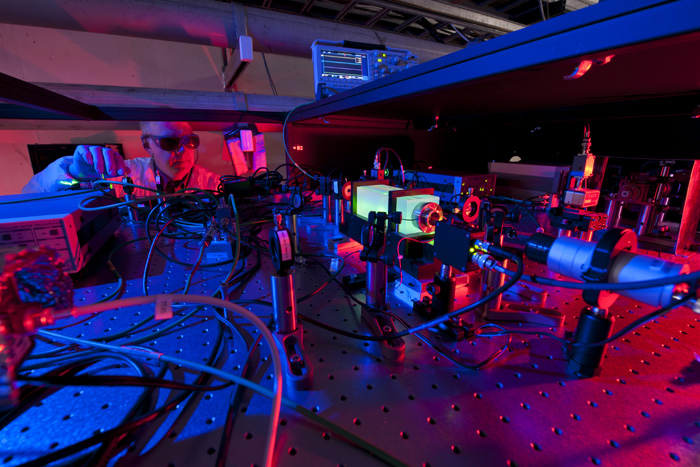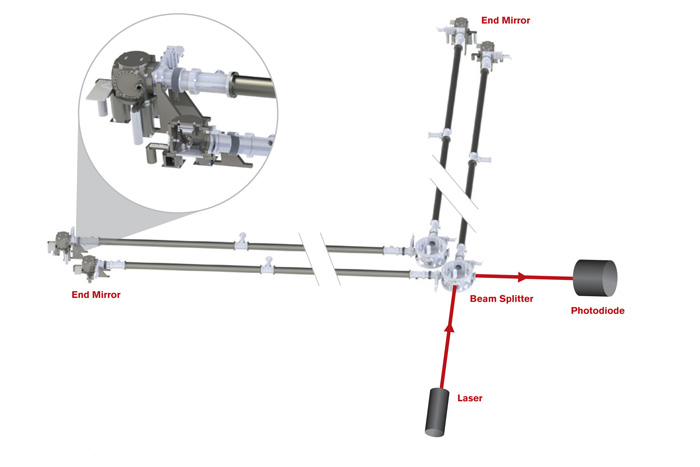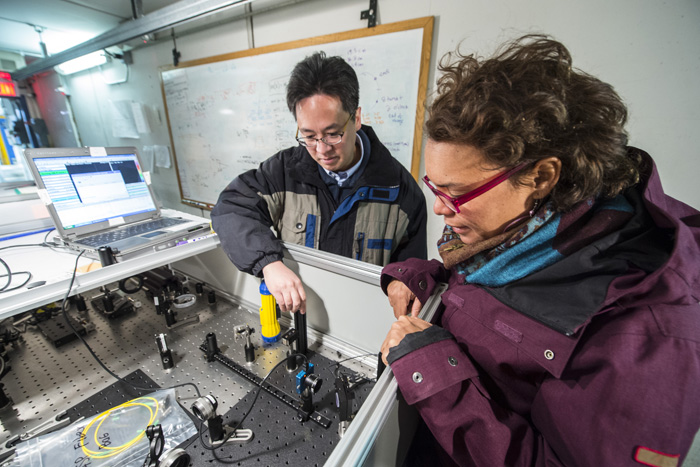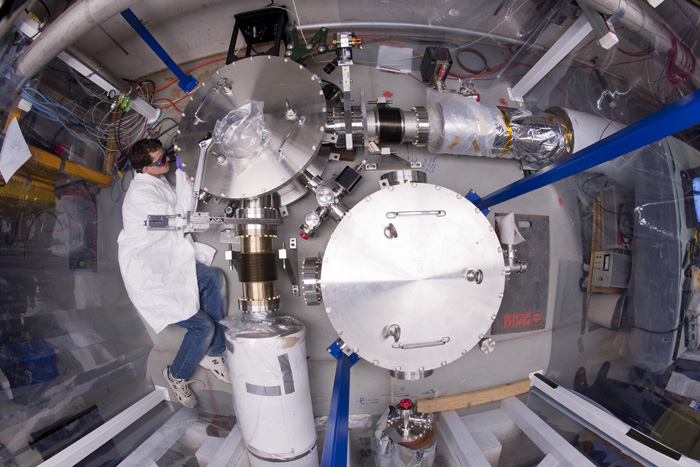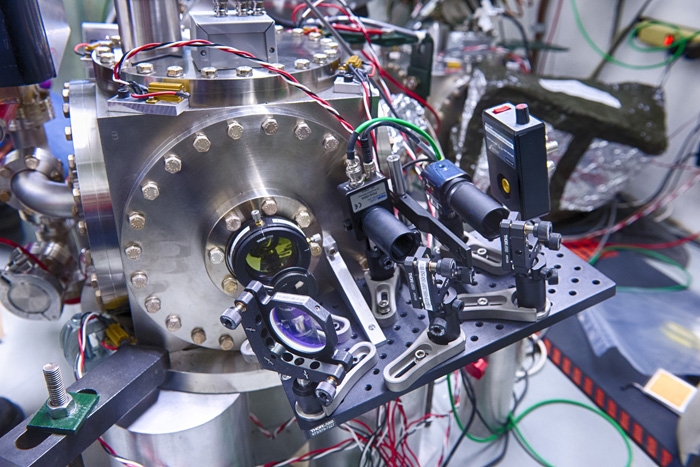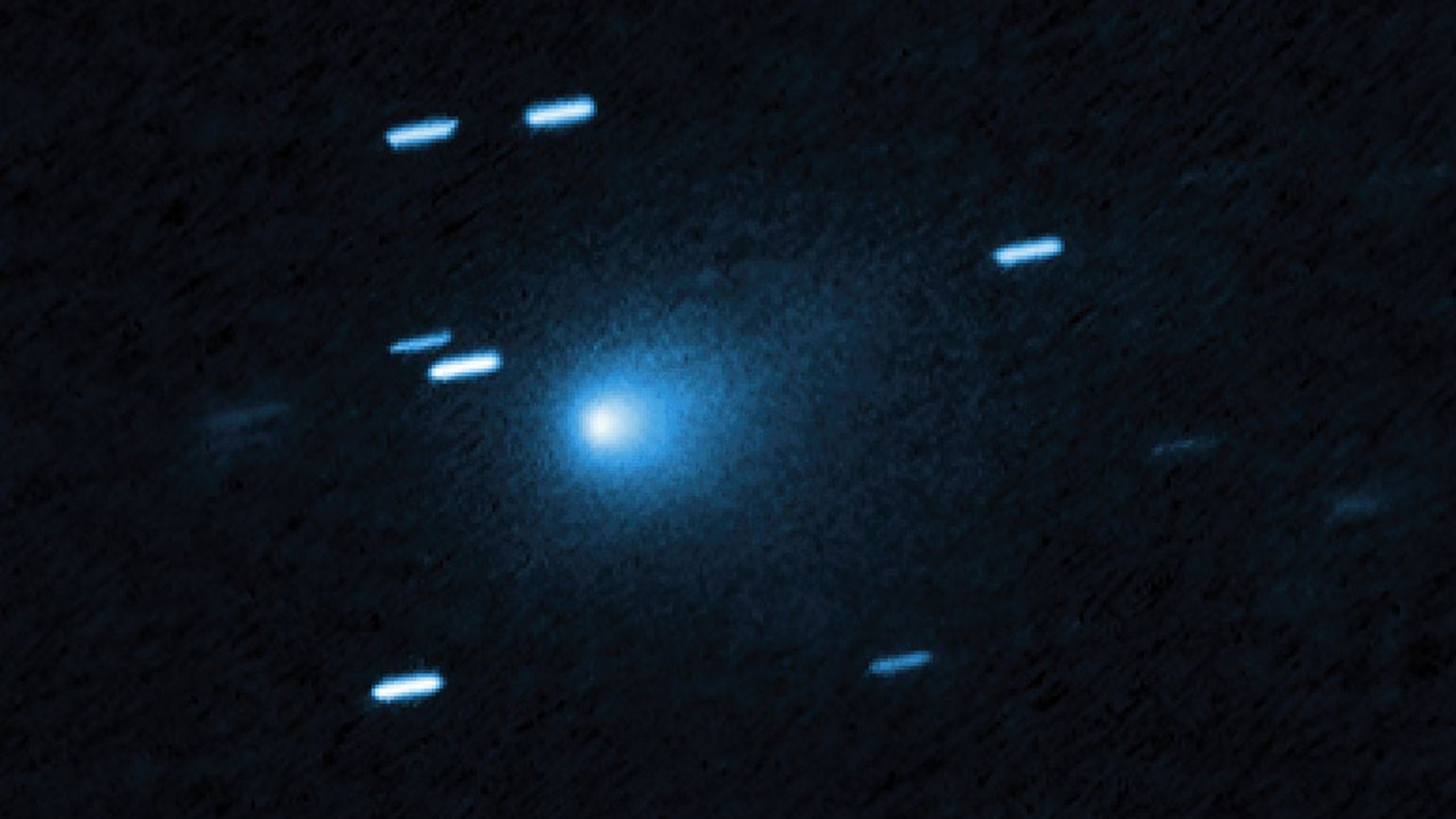Are We Living in a 2D Hologram? Photos of Laser 'Holometer' Experiment (Gallery)
Holograms and illusions
An experiment designed to probe the nature of space-time could reveal whether the universe exists in three dimensions, or whether we are living in a 2D hologram.
Here, a scientist at the U.S. Department of Energy's Fermi National Accelerator Laboratory (Fermilab) works on the so-called Holometer experiment, which will use twin laser interferometers to test whether the universe is a 2D hologram. [Read the full story.]
How it works
The Holometer includes two laser interferometers in 6-inch (15 centimeters) steel tubes that measure about 130 feet (40 meters) long.
Optical systems (not shown here) “recycle” laser light to create a very steady, intense laser wave. Scientists can then measure the holographic "jitter" of the space-time the two machines share.
Discussing the project
Fermilab scientist Aaron Chou (left), project manager for the Holometer experiment, and Vanderbilt University graduate student Brittany Kamai (right) examine part of the Holometer experiment.
A different view
The Holometer uses twin laser interferometers to look for "holographic noise" in space-time, which will help scientists test whether the universe is a 2D hologram.
The Holometer
A close-up view of the Holometer at Fermilab.
Breaking space news, the latest updates on rocket launches, skywatching events and more!

Space.com is the premier source of space exploration, innovation and astronomy news, chronicling (and celebrating) humanity's ongoing expansion across the final frontier. Originally founded in 1999, Space.com is, and always has been, the passion of writers and editors who are space fans and also trained journalists. Our current news team consists of Editor-in-Chief Tariq Malik; Editor Hanneke Weitering, Senior Space Writer Mike Wall; Senior Writer Meghan Bartels; Senior Writer Chelsea Gohd, Senior Writer Tereza Pultarova and Staff Writer Alexander Cox, focusing on e-commerce. Senior Producer Steve Spaleta oversees our space videos, with Diana Whitcroft as our Social Media Editor.
